SUMMARY
This is AI generated summarization, which may have errors. For context, always refer to the full article.
![[OPINION] Leni, the youth vote, and why it’s not over just yet](https://www.rappler.com/tachyon/2022/03/tl-leni-youth-votes-1.jpg)
Many of us are hopeful about young people and the elections. This hope, I believe, is not without basis.
Of the 65 million registered voters, 32.7 million are between the ages of 18 and 30. The youth sector, therefore, constitutes 50% of our voting population. If we expand the age bracket to 18-41, the number of voters goes up to 37 million. They are more than enough to determine the outcome of the elections in May.
Beyond their demographic significance, the youth are also celebrated for their idealism. As Ching Jorge puts it, “generations of Filipino youth have been instrumental in critical movements that have changed social and political landscapes.”
Many of course share her position. At a webinar where I spoke last week, many alluded to the “youth power” evident in the massive rallies for Leni. That they showcase the talents of our youth, they argued, testifies to the democratic and creative spirit of young Filipinos around the country.
But I also know that we need to have an honest conversation about the youth vote.
Whom are they inclined to vote for in 2022? And should we be worried?
The youth’s pulse
We now have enough data to discern voting patterns. These are based on Pulse Asia’s survey results in December 2021, January 2022, and February 2022. [READ: Marcos Jr. is top pick of Generation Z, says Pulse Asia survey]
In what follows, I will focus on two age brackets: 18-24 and 25-34. To simplify the presentation of data, I will only be looking at survey results for the top five candidates: Marcos, Leni, Isko, Pacquiao, and Lacson. Worth noting too is that these five candidates share 100% of the voting preferences for these age brackets.
Table 1. First choice presidential preference among 18-24
| December 2021 | January 2022 | February 2022 | |
|---|---|---|---|
| Marcos | 58 | 66 | 71 |
| Leni | 24 | 13 | 14 |
| Isko | 4 | 10 | 7 |
| Pacquiao | 10 | 8 | 5 |
| Lacson | 0 | 2 | 1 |
| Don’t know/Refused/None | 3 | 1 | 2 |
Table 1 above presents the voting preferences among 18-24 year-old Filipinos. In 2022, at least 4 million first-time voters will come from this age group. Many of them might be pursuing their undergraduate degrees, but many others are possibly working already.
The overwhelming majority of Filipinos in this age bracket are for Marcos Jr. But note the increase over time. In December 2021, Marcos Jr. attracted 58% of them. But by February 2022, 71% of these Filipinos were ready to vote for him.
Leni’s numbers, by contrast, declined over the same time. In December 2021, she had 24% of Filipinos in this age bracket. By February 2022, the proportion went down to 14%.
Where did her supporters go? The same question may in fact be asked of the other candidates as well. Looking at the general pattern among all of them, only Marcos benefited from a notable increase in the number of supporters.
Table 2. First choice presidential preference among 25-34
| December 2021 | January 2022 | February 2022 | |
|---|---|---|---|
| Marcos | 60 | 64 | 63 |
| Leni | 14 | 12 | 10 |
| Isko | 13 | 8 | 13 |
| Pacquiao | 10 | 9 | 8 |
| Lacson | 3 | 3 | 2 |
| Don’t know/Refused/None | 1 | 4 | 4 |
Table 2 above presents the voting preferences among 25-34 year-old Filipinos. The fluctuations for this age group are not as wide as they are for their younger counterparts.
Predictably, Marcos Jr. continues to enjoy the overwhelming support of these young adults. Even in December 2021, he already had the support of 60% of these Filipinos. It increased to 64% in January before going down by a percentage point in February 2022.
Leni’s numbers in this age bracket went down from 14% in December 2021 to 10% in February 2022. For the other candidates, their support in this age bracket has been arguably stable. But noticeable is the slight increase among the “don’t know/refused/none.”
The big picture
How do young Filipino voters fare relative to their adult counterparts? Table 3 below is useful in answering this question. It is based on the most recent survey released by Pulse Asia.
Table 3. First choice presidential preference by age group (February 2022)
| 18-24 | 25-34 | 35-44 | 45-54 | 55-64 | 65-up | RP | |
|---|---|---|---|---|---|---|---|
| Marcos | 71 | 63 | 63 | 55 | 54 | 55 | 60 |
| Leni | 14 | 10 | 12 | 17 | 19 | 18 | 15 |
| Isko | 7 | 13 | 10 | 12 | 6 | 11 | 10 |
| Pacquiao | 5 | 8 | 9 | 8 | 10 | 9 | 8 |
| Lacson | 1 | 2 | 1 | 3 | 2 | 5 | 2 |
| Don’t know/Refused/None | 2 | 4 | 3 | 5 | 8 | 2 | 4 |
To be sure, Marcos Jr. enjoys the support of the majority in each age bracket. But I think the figures are also telling. He seems to have a stronger support base among younger Filipinos.
Leni’s supporters, by contrast, tend to come from older Filipinos. Proportionally speaking, she has more supporters among adults aged 45 and above. The potential lesson here is this: adult Filipinos might be a sector she can continue to appeal to.
This observation is counterintuitive especially if one relies only on social media engagements. On Twitter, for example, a platform dominated by young Filipinos, one may be readily convinced that Leni has the youth vote.
And yet adult Filipinos constitute the other half of the voting population. They have their own issues to which Leni might be speaking more effectively. One can think of her concern for livelihood, unemployment, small businesses, and the pandemic.
The challenge
There’s a nugget of truth in what James Jimenez has to say about the youth vote. “If the youth can get its act together, it can become a very significant voting bloc.” The Comelec spokesperson then goes on to say that “basically, the youth will be able to dictate much of the outcome of the elections as well as the shape of the government to come.”
Given the magnitude of the youth vote, he is correct. But there is also another way of reading his statement: it is a challenge.
I say this especially in light of what I have presented above. Like their adult counterparts, the overwhelming majority of the youth is slated to vote for Bongbong Marcos.
And yet I still believe in our collective capacity to turn the tide. After all, as we have seen above too, noticeable shifts have in fact taken place among young voters — in just a matter of one or two months.
Finally, we cannot discount the contribution of adult Filipinos as well. Based on the figures above, they are a potential source of greater support for Leni.
What this means is this: it might be wise for Leni’s youth supporters to begin engaging adults in their spheres of influence. On social media, we have enough success stories among those who have done exactly that with their parents and neighbors.
In the face of these survey data, it is much easier to simply give up. But to us Sheila Coronel has these powerful words to say: “A Marcos return is inevitable only if we believe it to be. If we surrender our power and agency. If we accept explanation instead of action.”
And that is exactly what Marcos Jr. wants.
But as history has also shown us, Filipinos have a way of fighting back. With the strength of the youth and the wisdom of adults, we can end this Marcosian fantasy once and for all. – Rappler.com
Jayeel Cornelio, PhD is the Director of the Development Studies Program at the Ateneo de Manila University. A sociologist of youth, he is the editor of Rethinking Filipino Millennials: Alternative Perspectives on a Misunderstood Generation (UST Publishing House, 2020). Follow him on Twitter @jayeel_cornelio.
Add a comment
How does this make you feel?
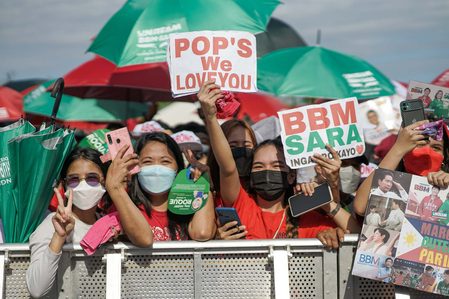
![[Newsstand] Dynamic race, static survey?](https://www.rappler.com/tachyon/2022/03/bbm-leading-surveys.jpeg?fit=449%2C449)
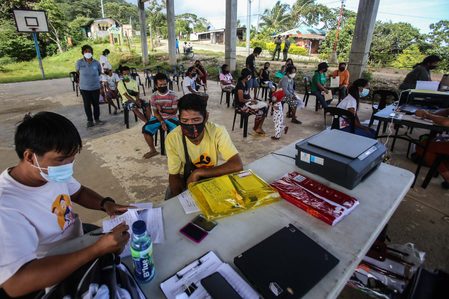
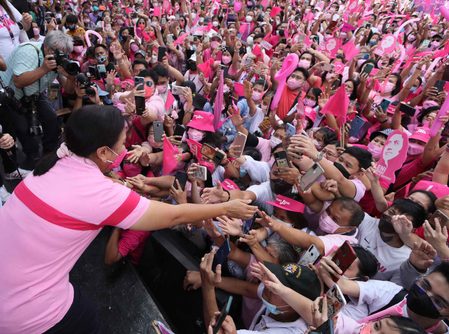
![[WATCH] In The Public Square with John Nery: Preloaded elections?](https://www.rappler.com/tachyon/2023/04/In-the-Public-Square-LS-SQ.jpg?resize=257%2C257&crop=414px%2C0px%2C1080px%2C1080px)
![[Newspoint] 19 million reasons](https://www.rappler.com/tachyon/2022/12/Newspoint-19-million-reasons-December-31-2022.jpg?resize=257%2C257&crop=181px%2C0px%2C900px%2C900px)
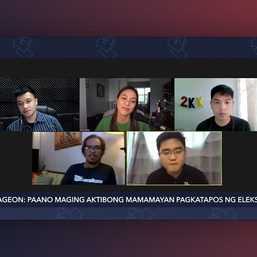
![[OPINION] The long revolution: Voices from the ground](https://www.rappler.com/tachyon/2022/06/Long-revolution-June-30-2022.jpg?resize=257%2C257&crop=239px%2C0px%2C720px%2C720px)
![[OPINION] I was called a ‘terrorist supporter’ while observing the Philippine elections](https://www.rappler.com/tachyon/2022/06/RT-poster-blurred.jpeg?resize=257%2C257&crop_strategy=attention)
![[OPINION] Sara Duterte: Will she do a Binay or a Robredo?](https://www.rappler.com/tachyon/2024/03/tl-sara-duterte-will-do-binay-or-robredo-March-15-2024.jpg?resize=257%2C257&crop_strategy=attention)
![[New School] Tama na kayo](https://www.rappler.com/tachyon/2024/02/new-school-tama-na-kayo-feb-6-2024.jpg?resize=257%2C257&crop=290px%2C0px%2C720px%2C720px)
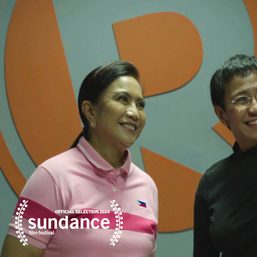
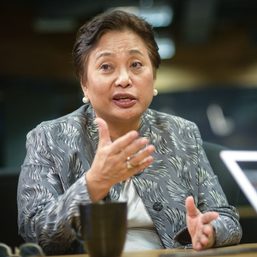

There are no comments yet. Add your comment to start the conversation.